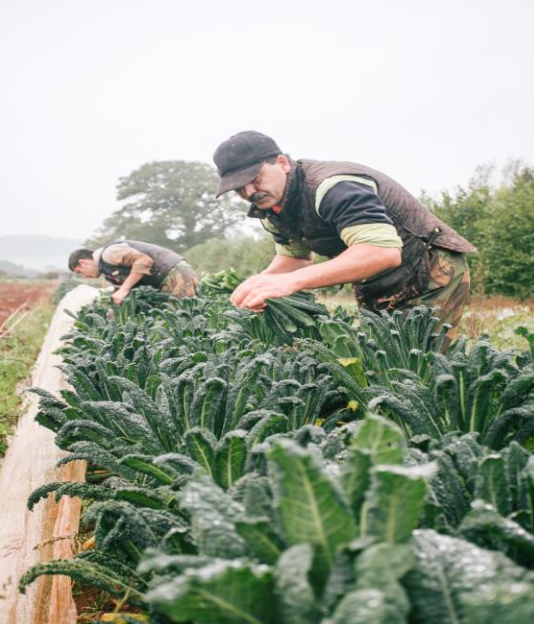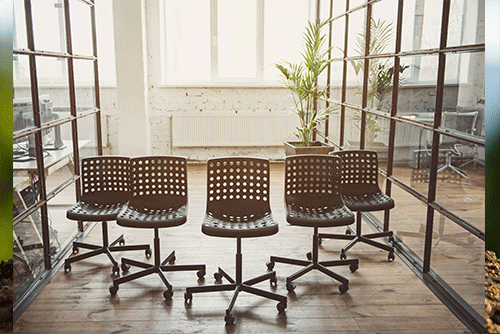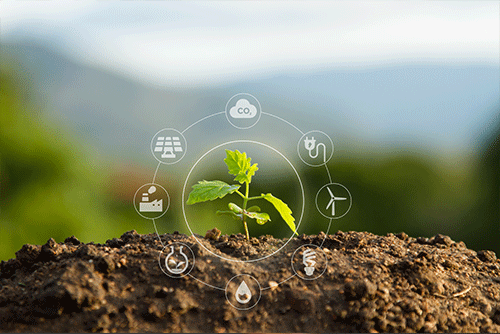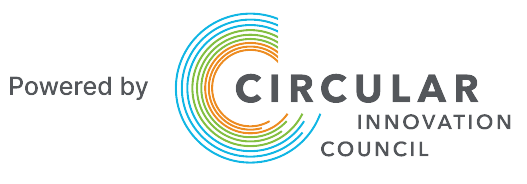What are
Circular Economy models?
By embedding circular requirements into the procurement process, vendors are incented to rethink and redesign their products and business models to consider the entire lifecycle of their goods or services to improve resource efficiency, reduce carbon emissions, minimize waste, maximize value, and reduce costs securing economic benefits for all actors in the supply and value chain. Five circular models underpin the circular economy are based on the principles of longevity, reuse, repairability, upgrade, share, and material reduction. Each model is unique, and procurement can encourage the delivery of one or a combination of models. Procurement and purchasing requirements can utilize these business models individually or collectively.


The circular economy requires circular business models.
Circular business models require circular procurement demands.
Business Model #1:
Product as Service
Product as Service shifts from the conventional model of buy-to-own to a lease or pay-for-use arrangement. Rather than a one-time sell, the product or asset is transitioned as a service where value is based on outcomes and performance rather than the physical asset. The costs and risks of ownership and waste management rest with the provider. Companies that offer this circular business model can establish longer and stronger relationships with customers. They also achieve more value out of each product by charging for its multiple uses and incented to design products that recover and reutilize the materials back into production as they maintain ownership.
Example: tool rentals; lightning as a service, printing services, car sharing, clothing rentals

Business Model #2:
Sharing Platform
Sharing Platform facilitates collaboration among individuals, organizations, or combination of both, to acquire the greatest productivity or value from a product that could otherwise be underutilized. Sharing platforms reduce the need to own a product or depreciating asset, and reduces waste and cost associated with its management throughout the entire lifecycle. This model can be leveraged by companies who want to want to increase the use and maximize value of products they sell.
Example: car sharing, tool rentals, consignment

Business Model #3:
Product Life Extension
Product Life Extension prolongs the life of products or assets to retain as much of their value as possible so they continue to be useful. This model is grounded on the ability of products or assets to be designed to last and be remanufactured, repaired, upgraded, or re-marketed. For companies it is important their business model focuses on ensuring material that would normally be treated as waste is maintained or improved to avoid disposal, and used as a potential source of new or additional revenue.
Example: computer hardware upgrades, furniture repair

Business Model #4:
Resource Recovery
Resource Recovery is designed as a closed-loop system where materials that were traditionally considered waste are recovered or reused as new resources back into the production cycle. This model maximizes economic value by eliminating material leakage and useful for companies that produce large quantities of by-product, or where waste from products can be captured and reprocessed. Driving resource recovery into product design and business delivery models is critical to elevating the value of discards or waste materials as a preference to virgin inputs.
Example: food and organic waste recycling, deposit return for beverage containers

Business Model #5:
Circular Supplies
Circular Supplies is based on products that are designed to use material inputs that are fully renewable, recyclable, or biodegradable so they can be used in consecutive production and consumption cycles. It replaces the traditional linear resource approach by phasing out non-renewable resources or single-use products that end up as waste.
This business model creates efficiencies throughout the lifecycle of products and reduces unnecessary waste. It is particularly useful for businesses affected by scarce commodities and volatile markets.
Examples: coat lining or patio furniture or a knapsack made from recycled plastic; plant-based packaging

